Sure, national parks get all the press. But what would we do without our state parks? They’re often the place to go for a picnic, an impromptu hike, a swim in the lake or to rent a paddle boat.
However, many times they’re overlooked by naturalists who view state parks as picnic spots that don’t offer much in the way of wildlife. But that’s a mistake.
Across the country, state parks offer some incredible opportunities for birders, natural history enthusiasts and other wildlife buffs.
Recently, several travel blogs have featured their picks for “best state parks” – but they’ve chosen them based mainly on scenery or recreational opportunities.
I’ve focused here on state parks I’ve actually visited that are great for wildlife and natural history.. It’s impossible to go to them all, of course, so I’m sure I’ve missed some great parks. Please let me know your own favorites in the comments section.
-
Custer State Park, South Dakota
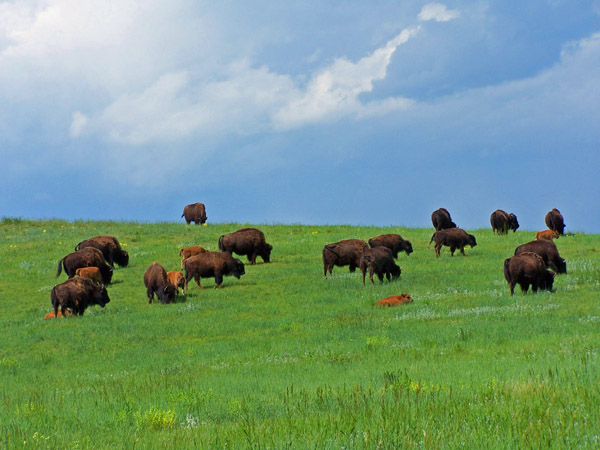
Herds of bison graze among prairie dog towns at Custer State Park. Photo: Matt Miller/TNC The granite peaks and native prairie of Custer State Park have long made it a popular draw for Black Hills tourists. It also offers fantastic wildlife viewing. It’s hard to miss the 1500 bison and expansive prairie dog towns.
But also keep an eye out for elk, pronghorn, bighorn sheep, mountain goats and wild turkeys. And yes, begging burros. I know they’re not native. But they still made me laugh.
-
Baxter State Park, Maine
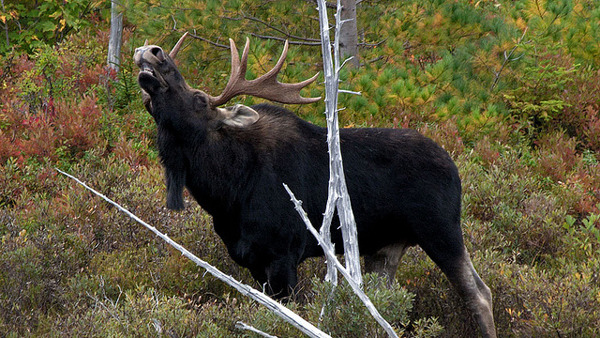
Moose spotted at Baxter State Park. Photo © Jim Dollar/Flickr through a Creative Commons license Baxter is best known for being the northern terminus of the Appalachian Trail, with great hiking trails including the ascent of Mount Katahdin. It also happens to be one of the best places in the eastern United States to see a moose.
In summer, you can often spot moose in the park’s many ponds, feeding on aquatic vegetation. A bull’s head will disappear beneath the surface for a minute and then – whoosh – reappear as water noisily runs of those impressive antlers.
-
Jedediah Smith Redwoods State Park, California
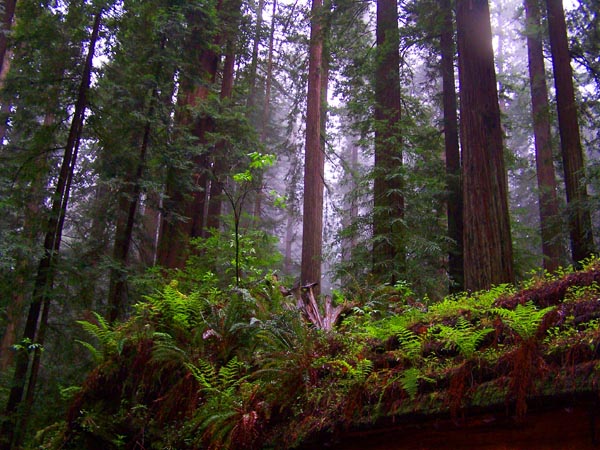
Hike the forest primeval at Jedediah Smith Redwoods State Park. Photo: Matt Miller/TNC California has a wealth of natural wonders at its state parks, from elephant seal colonies at Ano Nuevo State Park to desert wildflowers at Anza Borrego. I chose this one because it offers one of the great hikes through towering coastal redwoods: the Boy Scout Tree Trail. The full splendor of these giant trees is on display on this easily accessible hike.
The park is also home to Stout Grove, which the excellent web guide Redwood Hikes calls “the world’s most scenic stand of redwoods.” Keep your eye out for wildlife ranging from banana slugs on the trail to Roosevelt elk in the meadows.
-
Antelope Island State Park, Utah
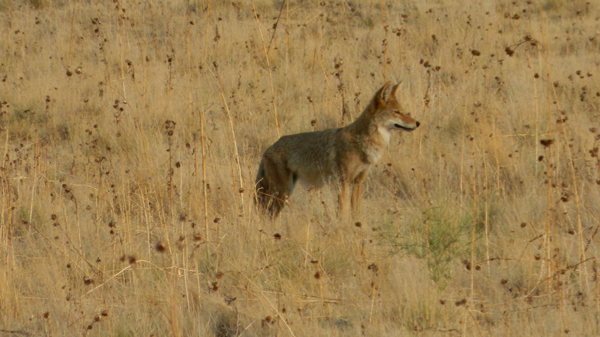
Coyote in Antelope Island State Park. Photo © Frank Holleman through a Creative Commons license Bison on the beach: that’s the real attraction on this large island in the Great Salt Lake. The herd of bison is easily spotted from the road or campsites, as are the island’s pronghorns or coyotes. Better yet, take a hike to see some of the bighorn sheep in the hills. Yes, the island really is that big. I came around the bend in one hiking trail only to find myself ten feet away from an enormous bull bison. Be alert.
Or get even closer: each year, a bison roundup is held on the island to help officials monitor the health of the herd and sell excess animals. You can participate by horseback even if you aren’t a skilled rider, although spots fill up fast. According to my friend Brett Prettyman, author and proudcer of the Utah Bucket List, as many as 400 riders help with the task each year.
-
Harriman State Park, Idah
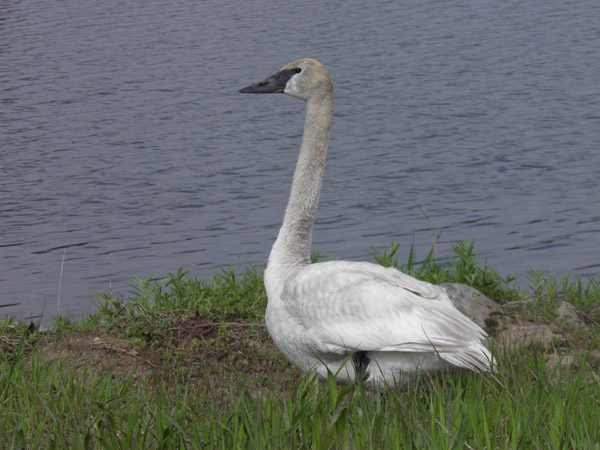
Harriman State Park is one of the best places to view trumpeter swans. Photo: Matt Miller/TNC Located near Yellowstone, Harriman has long been a global destination for fly fishers, who come to fish the Henry’s Fork. But it’s also a great place to critter watch, including moose, elk, black bear, trumpeter swan and white pelican.
An early morning horseback ride offers a great overview of the park and the best chance to see a variety of wildlife. For the more adventurous, take a snowshoe trip and stay at one of the park’s winter yurts.
-
Poe Paddy State Park, Pennsylvania
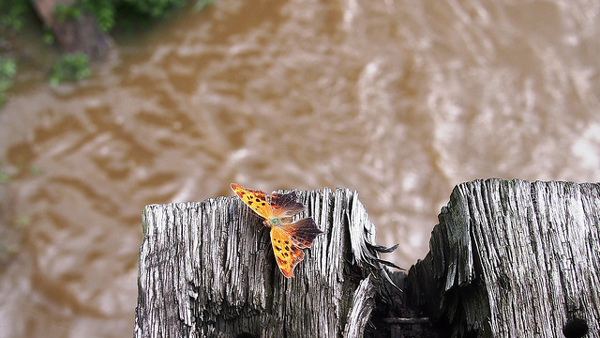
Poe Paddy State Park. Photo © miguel josé/Flickr through a Creative Commons license This park sits along the beautiful trout stream Penns Creek. Upstream, much of the creek is roadless, so it is one of the best and least crowded hikes in Pennsylvania. In the early mornings, I’ve often cast to trout and had the place to myself. I’ve been serenaded by eastern coyotes while trout rose in front of me. Mink are often hunting crayfish along the banks and hooded mergansers cruise the riffles.
Even if you don’t fish, the mayfly hatches (particularly the green drake) are one of the great natural spectacles of spring. Thousands of large but delicate insects hover in the air as they do their mating dance, while birds, bats and trout feast.
-
Lake Fausse Pointe State Park, Louisiana
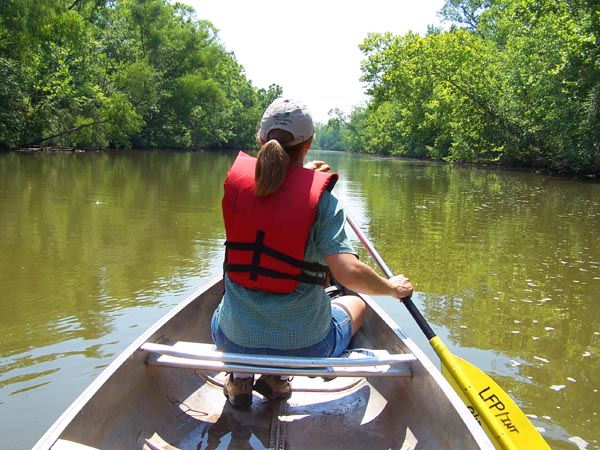
A self-guided bayou tour brings you up close to water birds, turtles and alligators. Photo: Matt Miller/TNC Bayou tours are a popular activity among New Orleans tourists, often involving tour groups. These can be a fine way to see the local alligators, but here’s a way to do it on your own: rent a canoe or kayak at Lake Fausse Point, and head out on the park’s seven-mile canoe trail.
The birding is excellent with wood storks, roseate spoonbills, various heron and egret species and red-shouldered hawks all common. You’ll also likely see turtles and a gator or two. You can even camp or rent a cabin out on the bayou, but be sure to bring plenty of insect repellent. When you return, there’s a little water park by the canoe rental – perfect for cooling off after a day of humid paddling.
-
Edward Ball Wakulla Springs State Park, Florida
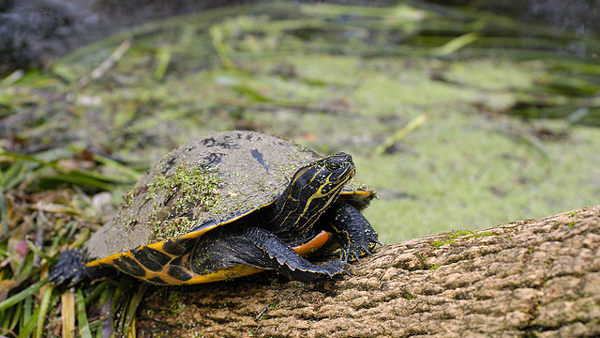
River cooter at Edward Ball Wakulla Springs State Park. Photo © Christopher P. Bills through a Creative Commons license One of the largest freshwater springs in the country, this state park has a variety of water birds, turtles, alligators and other wildlife. But the big draw is the manatees. Unlike many manatee-watching spots in Florida, you can see them here year round. Daily boat tours allow visitors to get up-close views.
The park reports that in winter months, visitors can climb the diving tower and see manatees from the shore.
-
Bentsen – Rio Grande Valley State Park, Texas
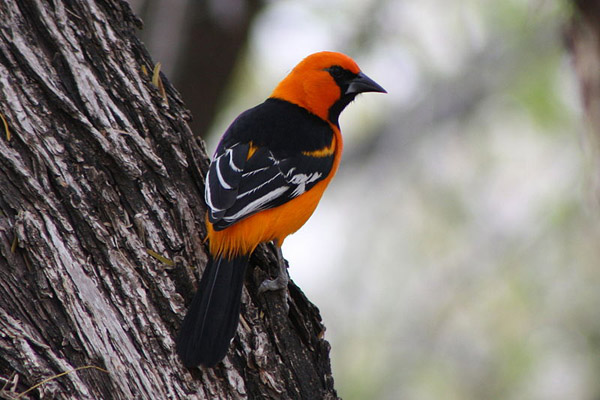
Altamira orioles are a star attraction at South Texas parks. Photo: Kati Fleming under a Creative Commons license. This park is one of nine state parks that make up the World Birding Center, so you might expect it to be rich in avian wonders. The park’s check list – consisting of 500 + species – should tell birders all they need to know. This is one of the best places to see tropical species in the United States. During my recent short visit, I quickly saw great birds including Altamira orioles, green jays and plain chachalacas. You might also see a groove-billed ani, a buff-bellied hummingbird, a great kiskadee or many, many other great birds.
A daytime tram takes visitors around the site – or you can hike or bike. There are two bird blinds, a hawk observation tower and comfortable seats set up around bird feeders.
On top of that, it’s also a well-known spot to see large numbers of migrating dragonflies and butterflies. Mammals like javelinas, bobcats and cotton rats are also frequently recorded. All in all, a naturalist’s dream spot.
-
First Peoples Buffalo Jump State Park, Montana
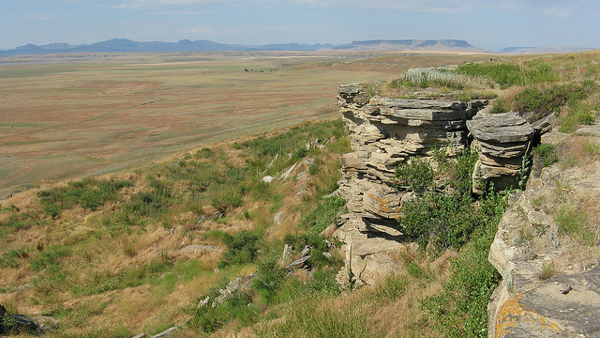
Buffalo Jump Ledge. Photo © Travis/Flickr through a Creative Commons license While this state park has some interesting wildlife, including an expansive prairie dog town, it’s most interesting for its wildlife history. The cliff here was once the site where indigenous hunters drove large numbers of bison over the cliff to their deaths – providing a huge supply of meat in one effort.
Coordinating such a hunt – conducted before the arrival of horses – and harvesting tens of thousands of pounds of meat before it spoiled required extensive planning and coordination. The excellent visitor’s center explains how it all worked. You can hike to the top of the “jump” and imagine that time of wild freedom on the plains.
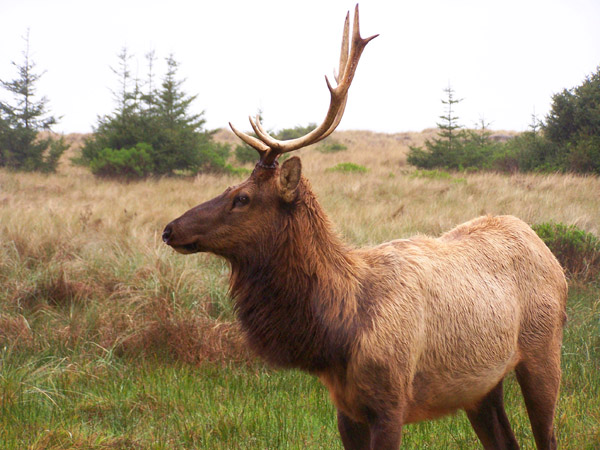



Any honorable mentions involving Michigan?
Stephen,
We’re open to Michigan suggestions (and any other states with great parks!).
I am glad to see Wakulla Springs park here, but surprised to see that it has a year-round manatee population. I lived for many years in nearby Tallahassee and visited the park often, but never saw manatees there. It has been almost a decade since I moved from the area, so this is apparently a recent and welcome development. The springs would offer a safe habitat for the slow-moving manatees away from boat traffic other than those used for wildlife tours, and maintains an even water temperature year-round. The Florida panhandle does get some cold weather in winter, but apparently not too cold for the manatees. Regardless, there is plenty of other wildlife (gators, turtles, wading birds) on the river, which tour boat operators gladly point out, and it is a beautiful location.
Thanks Matt … cool tour. Suggestions for other State Parks would be one of the “dune” or “desert” state parks, Bruneau Dunes State Park in Idaho for example an amazing array of wildlife and plant life to go along with the dunes. Another would be the Valley of Fire State Park in Nevada, road runners, kit fox and many other critters in a red rock and shrub environment.
Thanks Ken. You know, Bruneau Dunes was on my short list but I wanted to feature only one per state. It is no doubt a great park — for the wildlife and for those really incredible sand dunes (the tallest inland dunes in North America).
I have not been to Valley of Fire, but I will have to get there. A kit fox is one of my “most wanted” wildlife species to see.
Cheers,
Matt